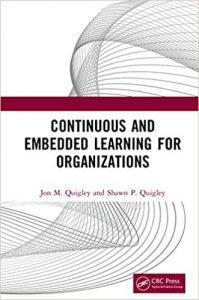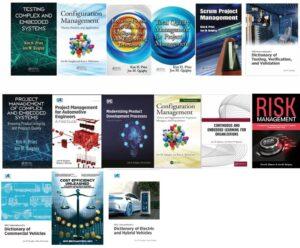Outsourcing Testing Doesn’t Have to Kill Product Quality: Trust But Verify
Jon M Quigley
The genesis of this post is https://www.linkedin.com/feed/update/urn:li:activity:7343144597839056897/
Outsourced Testing Best Practices: Safeguarding Product Quality in 2025
We often seek out best practices for outsourced testing as if there is a silver bullet. That is not so. Some key principles help.
Outsourced testing is often criticized as a shortcut that leads to poor quality, delayed launches, and lost accountability. But with the right strategy, metrics, clear communication, and a robust review process, it can be a powerful asset, not a liability. As with most things, poor strategy and execution will likely result in poor results. From experience, we tend to think of outsourced testing as a panacea for our testing. Outsourcing any work still requires us to be engaged with the work.
When we worked at a vehicle OEM (Original Equipment Manufacturer), we noted that outsourcing to a supplier did not remove all of our hours associated with the work. We needed 20%-30% of the associated hours of engagement. For example, the estimated hours for the testing are 2,000 hours outsourced; we will need to allocate 400 to 600 hours of customer expertise engagement in the effort. This was for a specific supplier. To be clear:
- Oursourced testing hours = 2,000 hours
- Our monitoring and engagement = 400-600 hours
- Total hours associated with testing = 2,600 hours
The point is, this is not a fire-and-forget type of work. The hours vary. This guide explores outsourced testing best practices, the importance of test planning and reviews, and why regression testing is non-negotiable for any product, from software to hardware.
Oursourcing and Testing Prerequisites and Workflow
If you do not understand the work scope and flow, you will have little chance of success when outsourcing. Outsourcing reduces some of the workload but does not eliminate it. Our organization knows best the connection between the device under test (DUT) and our organization, especially if the DUT is connected to a system. Ideally, we will establish a common mental model for the testing processes and workflow with the outsourcing supplier.
Testing Prerequisites
Specific prerequisites must be established before any testing—outsourced or not—can succeed. The degree to which these things matter depends on our particular circumstances.
- Clear Requirements: Document business processes, technical specifications, and expected outcomes. This need not be done throughout the work pipeline; learning happens, and things will likely change.
- Defined Scope: Identify what will be tested, including systems, roles, and data.
- Test Environment: Prepare all necessary configurations, integrations, and test data.
- Resource Allocation: Assign responsibilities and ensure all stakeholders understand their roles.
Test Workflow
A robust workflow is essential for effective outsourced testing. The typical artifacts and processes include:
- Requirement Analysis
- Test Planning
- Test Case Design
- Test Data (inputs to exercise software)
- Test Execution
- Defect Management
- Regression Testing
- User Acceptance Testing (UAT)
- Reporting and Documentation
- Maintenance and Continuous Testing
By following these steps, organizations can ensure that outsourced testing best practices are embedded into every phase of the testing lifecycle.
The Value of Reviewing Test Plans, Test Cases, and Test Methods
Why Test Reviews Matter
A thorough review of test plans, cases, and methods is critical, regardless of whether testing is outsourced or handled internally. Here’s why:
- Enhanced Test Quality: Early identification of missing scenarios, vague requirements, or redundant tests.
- Improved Coverage: Ensures all business and technical requirements are addressed.
- Early Issue Detection: Catches errors before they reach execution, saving time and cost.
- Collaboration: Fosters knowledge sharing among developers, testers, business analysts, and product owners.
- Consistency and Efficiency: Standardizes testing practices and eliminates unnecessary work.
Who Should Review?
- Testers: Ensure practicality and completeness.
- Developers: Validate technical accuracy.
- Business Analysts: Confirm alignment with business goals.
- Product Owners and Managers: Prioritize based on impact and coordinate communication.
Beyond Software
These review processes are vital for testing hardware, embedded systems, and business processes. For example, in A/B testing for marketing campaigns, a thorough brief and review of test scenarios is essential to ensure meaningful results and accountability.
Trust but Verify: The Outsourcing Mantra
While trust is a cornerstone of any outsourcing relationship, verification is essential:
- Transparent Communication: Use tools like Jira, Slack, or real-time dashboards for updates and feedback.
- KPIs and Metrics: Set measurable goals—defect rates, defect arrival rates, test execution rates, and automation coverage—and monitor progress.
- Continuous Oversight: Regularly review reports, monitor deviations, and take corrective action.
- Conduct Testing Subset: Perform some of the same internal tests that the outsourced supplier will conduct. Compare the results, and respond accordingly.
This “trust but verify” approach ensures that outsourced testing best practices are not just theoretical, but actively enforced throughout the project. It requires continuous, defined metric gathering and metric recording, audits, exploration, and communication.
Regression Testing: Definition and Consequences of Neglect
I have seen so many unintended consequences of product modifications or updates that my default setting is to conduct regression testing. This is a risk-averse stance, and when working on vehicles, the cost of getting them wrong can be high in many dimensions. Of course, this can change depending on the circumstances. At this point, you might be tired of hearing the phrase “sending on circumstances,” but that is what best practice is about.
What is Regression Testing?
Regression testing is re-running functional and non-functional tests to ensure that recent changes—bug fixes, enhancements, or configuration updates—haven’t broken existing functionality. It is a safeguard against the domino effect of software and system changes.
Why is Regression Testing Essential?
It is easy for unintended consequences, such as software builds that include the wrong module version, hardware version control, or accidentally “updating” another part of the software, or accidental parameter update.
- Maintains Stability: Ensures new updates don’t disrupt what already works.
- Prevents Bugs: Detects unintended side effects from new code or system changes.
- Supports Rapid Release: Enables fast, reliable deployments by catching issues early.
Consequences of Skipping Regression Testing
Neglecting regression testing can have disastrous effects. In a short story, a supplier makes a minor update to the software. The new updates are tested and pass, and the software is delivered to production for vehicle builds. The vehicles come off the line and are parked because of an apparent defect. This required massive rework when we discovered a parameter was accidentally altered in the release. This would have easily been found in regression testing.
- Undetected Failures: New features may break existing ones, causing critical functions to fail.
- Unintended Changes: Mistakes can happen with things that were
- Customer Impact: Users encounter bugs in previously working features, eroding trust and satisfaction.
- Financial Loss: Defects caught post-release are far more expensive to fix and can lead to lost revenue and reputation.
- Missed Deadlines: Late discovery of issues leads to delays, rework, and missed market opportunities.
I believe regression testing is a good candidate for automation.
Outsourced Testing Best Practices: Key Takeaways
- Plan and Prepare: Establish precise prerequisites and a structured workflow for all testing, not just software.
- Review and Collaborate: Make test plan, test case, and test method reviews a non-negotiable part of your process.
- Trust but Verify: Maintain transparency, set KPIs, and monitor progress to ensure accountability in outsourced testing. Perform testing internally and compare the results with the outsourced.
- Never Skip Regression Testing: Protect your product’s integrity by making regression testing routine, not optional. Consider automation.
By embracing outsourced testing best practices, organizations can achieve high product quality, rapid delivery, and robust risk management without sacrificing control or accountability. Trust your partners, but always verify the results. And never, ever skip regression testing.
For more information, contact us:
The Value Transformation LLC store.
Follow us on social media at:
Amazon Author Central https://www.amazon.com/-/e/B002A56N5E
Follow us on LinkedIn: https://www.linkedin.com/in/jonmquigley/
https://www.linkedin.com/company/value-transformation-llc
Follow us on Google Scholar: https://scholar.google.com/citations?user=dAApL1kAAAAJ






